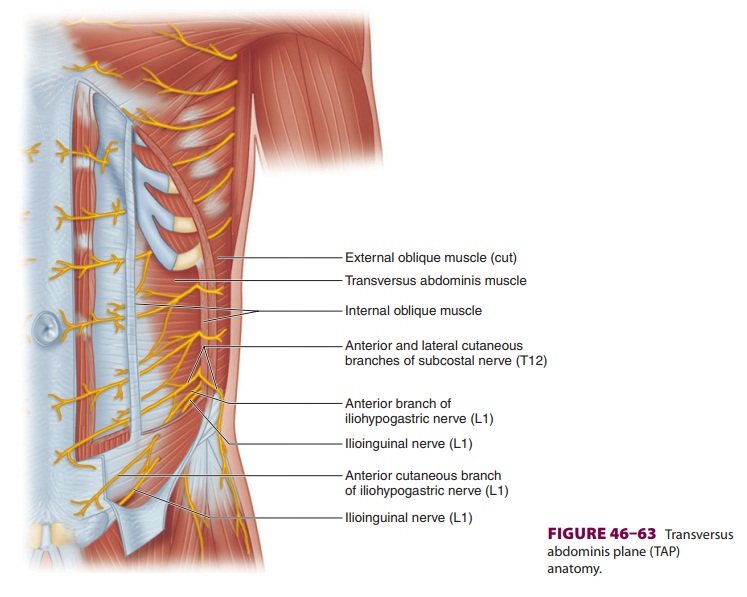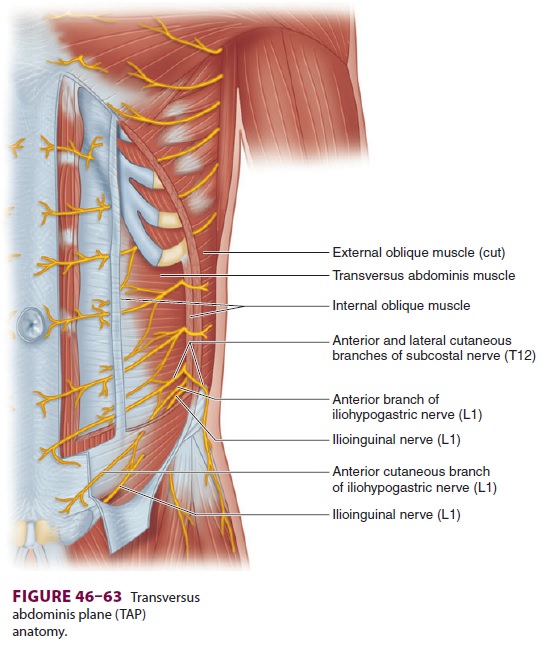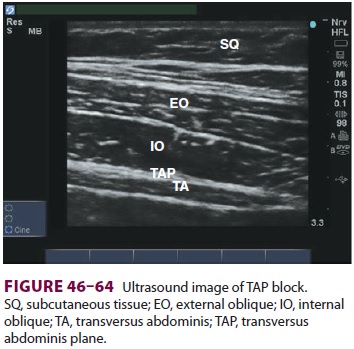Chapter: Clinical Anesthesiology: Regional Anesthesia & Pain Management: Peripheral Nerve Blocks
Peripheral Nerve Blocks of the Trunk: Transversus Abdominis Plane Block

Transversus Abdominis Plane Block
The transversus abdominis plane (TAP) block
is most often used to provide surgical anesthesia for minor, superficial
procedures on the lower abdom-inal wall, or postoperative analgesia for
procedures below the umbilicus. For hernia surgeries, intrave-nous or local
supplementation may be necessary to provide anesthesia during peritoneal
traction. Potential complications include violation of the peritoneum with or
without bowel perforation, and the use of ultrasound is highly recommended to
minimize this risk.The subcostal (T12), ilioinguinal (L1), and iliohypogastric
(L1) nerves are targeted in the
TAP block, providing anesthesia to the
ipsilateral lower abdomen below the umbilicus (Figure 46–63). For part of their course, these three nerves travel in the muscle
plane between the internal oblique and transversus abdominis muscles. Needle
placement should be between the two fascial layers of these muscles, with local
anesthetic filling the transversus abdominis plane. The patient is ideally
positioned in lateral decubitus, but if mobility is limited the block may be
performed in the supine position.

A. Ultrasound
With a linear or curvilinear array transducer ori-ented parallel to the
inguinal ligament, the layers of the external oblique, internal oblique, and
transver-sus abdominis muscles are identified just superior

to the anterior superior iliac spine (Figure
46–64). Muscles appear as striated hypoechoic
structures with hyperechoic layers of fascia at their borders.long
(10-cm) needle is inserted in-plane just lat-eral (posterior) to the transducer
and advanced, noting tactile feedback from fascial planes, to the hyperechoic
effacement of the deep border of inter-nal oblique and the superficial border
of transver-sus abdominis. Following careful aspiration for the nonappearance
of blood, 20 mL of local anesthetic is injected, observing for an elliptical
separation between the two fascial layers (Figure 46–64).
Related Topics